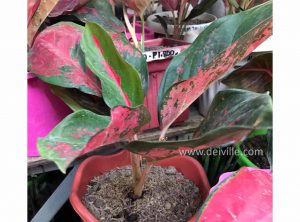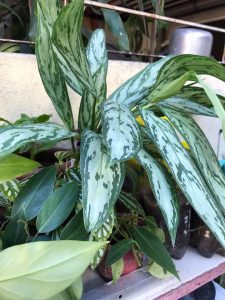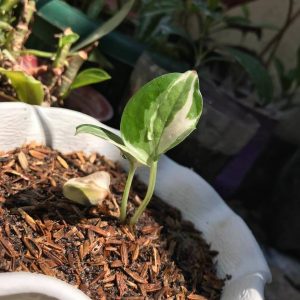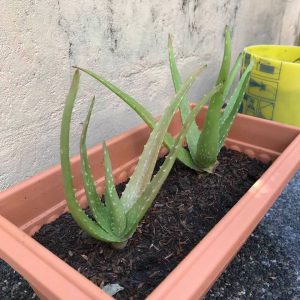Best Indoor Plants For Your Home – Air-Purifying Plants
Other significant interest of having indoor and outdoor plants within the home or office spaces other than being just fairly an ornament is the air filtering purpose of particular pollutants and air toxins. Likewise, NASA (National Aeronautics and Space Administration) or NASA Clean Air Study via space stations assessed most of the air purifying plants that are recommended for indoors. The study suggested that, in addition to absorbing carbon dioxide and releasing oxygen through photosynthesis, certain common indoor plants may also provide a natural way of removing volatile organic pollutants such as benzene, formaldehyde, and trichloroethylene were tested. Take note that all plants clean air or have a great connection in improving air quality through the natural process of photosynthesis.
Sick building syndrome or SBS. “The term “sick building syndrome” (SBS) is used to describe situations in which building occupants experience acute health and comfort effects that appear to be linked to time spent in a building, but no specific illness or cause can be identified. The complaints may be localized in a particular room or zone, or may be widespread throughout the building. In contrast, the term “building related illness” (BRI) is used when symptoms of diagnosable illness are identified and can be attributed directly to airborne building contaminants. A 1984 World Health Organization Committee report suggested that up to 30 percent of new and remodeled buildings worldwide may be the subject of excessive complaints related to indoor air quality (IAQ). Often this condition is temporary, but some buildings have long-term problems. Frequently, problems result when a building is operated or maintained in a manner that is inconsistent with its original design or prescribed operating procedures. Sometimes indoor air problems are a result of poor building design or occupant activities.” – United States Environmental Protection Agency.
What causes sick building syndrome?
The term “sick building syndrome” is used when the exact cause of your symptoms can’t be identified. However, there are a variety of possible causes you can ask your doctor about.
The culprits behind SBS may include:
- buildings with poor ventilation, such as schools, offices, and public spaces
- high levels of dust
- tobacco smoke
- rooms with poor lighting
- outdated computer displays that cause eye strain
- the presence of mold or fungus
- formaldehyde (mostly found in wood furniture and floors)
- asbestos
- chemicals in the air from cleaning products
- pesticides
- carbon monoxide
- ozone from the use of printers and fax machines
- high levels of stress at school or work
- low workplace morale
- heat or low humidity
- noisy work environments
- insect or animal droppings
Now that plant enthusiasts are into trendy but health-beneficial plants, for starters you don’t need to immerse your budget into imported and expensive greens. Go for cheap and local plant suppliers, more importantly sharing ones plants to another is way rewarding.
The following indoor plants can help reduce toxic pollutants:
Chinese Evergreen (Aglaonema modestum)
Aglaonema is a genus of flowering plants in the arum family, Araceae. They are native to tropical and subtropical regions of Asia and New Guinea. They live in low-light conditions and are a popular houseplant. Most propagation of Aglaonema is done with cuttings and by dividing the basal shoots. Care of the houseplant involves protecting it from cold temperatures and excessive sunlight and removing any inflorescences that develop, which can prolong the life of the plant. It requires moist soil, and while some cultivars require a small amount of fertilizer, plants are easily injured when oversupplemented.

Aglaonema plants are poisonous due to calcium oxalate crystals. If ingested they cause irritation of the mucous membranes, and the juice can cause skin irritation and painful rash.

Silver queen is also called painted drop tongue, is an evergreen perennial with a free-branching habit that typically grows to 24” tall. It is a very popular houseplant that thrives in low to bright light levels. Keep the soil moist at all times, do not allow it to dry out. Best in a normal room temperature 18-24°C, however avoid cold draughts. It is primarily grown for its attractive variegated foliage and not for its insignificant flowers.

Aglaonema Red Siam Aura is an extremely easy to grow houseplant. The green leaves are elegantly flushed with red markings. These plants can tolerate low light conditions and periods of drought.

Aglaonema ‘Suksom Jaipong‘ is a very easy to take care of , air purifying plant. It comes with one 3-4 inch round shaped plastic planters. This plant size (5-10 Inch) This plant is best with coco peat or prepared soil.

Effective in reducing air pollutants and toxic chemicals: formaldehyde, benzene, and trichloroethylene
Pet friendly? No
Ceriman / Cheese Plant (Monstera Deliciosa)
These large-leafed philodendron plants are easy to grow during warmer periods. direct sunlight, it’s best placed in a spot with bright indirect light.
Effective in reducing air pollutants and toxic chemicals: formaldehyde and benzene
Pet friendly? No
Snake Plant (Dracaena trifasciata)
Snake plant nicknames includs: Mother-in-law’s tongue, Saint George’s Sword and Viper’s Bowstring hemp. The thin, upright leaves with irregular green banding look like snake skin, hence the name snake plant.

These are low-maintenance plants that can withstand droughts as it doesn’t need much watering. It prefers bright light, but it can survive lower light levels as well. Perfect new plant parents because this house plant can live in almost any environment.
Snake Plant (Sanseviera trifasciata variety – Laurentii)
Laurentii is one of the most popular Sansevieria fasciata cultivars. The golden leaf margins make it an eye-catching choice for any garden. This variety of Sansevieriafeatures deep green leaves with golden edges. At maturity, the plant can reach up to four feet tall.
Snake Plant (Sansevieria bacularis – Musica)
Sansevieria bacularis Mikado is a compact hybrid Snake Plant. Sansevieria bacularis has dark green leaves with slightly paler light green striping. The name bacularis stems from the latin word baculum meaning stick, rod or staff. The Mikado form adds an interesting fountain-like shape for a more modern look.

Effective in reducing air pollutants and toxic chemicals: formaldehyde, benzene, trichloroethylene, toluene, xylene, and nitrogen oxides.
Pet friendly? No
Pothos (Epipremnum aureum)
Known for a multitude of common names: golden pothos, Ceylon creeper, hunter’s robe, ivy arum, house plant, money plant, silver vine, Solomon Islands ivy, marble queen, and taro vine. It is also called devil’s vine or devil’s ivy because it is almost impossible to kill and it stays green even when kept in the dark.

Dubbed as the cubicle plant, a low maintenance houseplant is easy to grow and starts out small, its trailing vines can grow to over 10 feet long.It only requires low light. Propagate them through water (use distilled or rain water, or have your tap water sit overnight to filter out the chlorine.) Take 6 to 12 inches of cutting and snip off the lower leaves. Plant the pothos in a pot as soon as the roots start to emerge.
This heart-shaped leaf that does well in a variety of conditions–both the sun and shade, moist and dry soil and poor substrates. It is sometimes mistakenly labeled as a P
Effective in reducing air pollutants and toxic chemicals: formaldehyde, benzene, toluene, and xylene
Pet friendly? No
Cornstalk Dracaena (Dracaena fragrans ‘Massangeana’)
Corn plants thrive in minimal attention and low light conditions. These indoor plants can easily adapt to different light environments, though it’s best to keep them away from direct sun.

Effective in reducing air pollutants and toxic chemicals: formaldehyde, benzene, trichloroethylene, and xylene
Pet friendly? No
ZZ Plant (Zamioculcas zamiifolia)
Zamioculcas zamiifolia also as impressive nicknames: ZZ plant, Zanzibar Gem, welcome plant , lucky plant , fat boy, money plant, zu -zu plant ,evergreen plant, timbuktu gem, Taiwan green zem and feng shui green.

ZZ plant is exceptionally low maintenance and drought tolerant. This plant can be propagated by getting the large potato-like rhizomes under the horizontal stems that continuously grow. These rhizomes are said to store water that helps the plant survive drought in its natural environment. During its growing period, they are recommended to water them once a month.
Asian cultures believe that a ZZ Plant “symbolizes prosperity and friendship,” making it a great housewarming gift.
Pet friendly? No
Spider Plant (Chlorophytum comosum)
These plants require bright light, but no direct sun. It gives off instant outdoor vibes and they’re easy to care for and propagate.
Effective in reducing air pollutants and toxic chemicals: formaldehyde, and xylene
Pet friendly? Yes
Rubber Plant (Ficus elastica)
Known as Ficus elastica, the rubber fig, rubber bush, rubber tree, rubber plant, or Indian rubber bush, Indian rubber tree, is a species of plant in the fig genus, native to eastern parts of South Asia and southeast Asia. It has become naturalized in Sri Lanka, the West Indies, and the US State of Florida.
It requires bright light or minimal sunlight and a fine spot for it to be happy and grow, and remove carbon dioxide from your home. It can handle under-watering or has a high tolerance of neglect.
Effective in reducing air pollutants and toxic chemicals: carbon dioxide
Pet friendly? No
Weeping fig (Ficus benjamina)
Ficus benjamina, commonly known as weeping fig, benjamin fig or ficus tree, and often sold in stores as just ficus, is a species of flowering plant in the family Moraceae, native to Asia and Australia. It is the official tree of Bangkok.
Effective in reducing air pollutants and toxic chemicals: formaldehyde, benzene, toluene, and xylene
Chlorophytum comosum Peace Lily, White Lily (Spathiphyllum ‘Mauna Loa’)
Peace lily’s dark green foliage and year-round flowers prefers a shady space or corner although this plant needs more attention compared to other indoor plants. That means keeping it moist without over-watering and placing it in a bright but shady spot.
It produces oxygen at night, while most other plants do that during the day, most plant lovers like to put them in their bedrooms.
Effective in reducing air pollutants and toxic chemicals: formaldehyde, ammonia, trichloroethylene, and benzene
Pet friendly? No
Heartleaf Philodendron (Philodendron cordatum)
Like the pothos, philodendron’s dramatic heart-shaped leaves and trailing vines can grow to over 10 feet long. With the right indoor conditions, it’s the easiest houseplants to grow and a low-maintenance plan. They are easy to prune and propagate with minimal light levels and the right amount of watering.

Effective in reducing air pollutants and toxic chemicals: formaldehyde
Pet friendly? No
Aloe Vera (Aloe barbadensis miller)
Commonly known as the healer plant, it is used to heal wounds and different skin conditions. Aloe vera juice has anti-inflammatory and anti-bacterial properties. Easy to care for with the right amount of bright, and sunshine. Let their soil dry completely before watering.

Effective in reducing air pollutants and toxic chemicals: formaldehyde
Pet friendly? No
Other Trending Plants
Alocasia Bambino (Alocasia amazonica) is nothing too fancy; all you need is water the plant once or twice a week depending on its needs, fertilize it monthly, and make sure it sits under warm temperatures and indirect sunlight. You don’t have to stress about pruning or repotting the plant frequently. For watering, allow the top 2-3″ to dry between watering to ensure the plant isn’t sitting in soil that is too wet. During the winter, Alocasias will go through a dormancy period and will require less frequent waterings as the soil will take longer to dry.

Calathea makoyana also known as peacock plant or cathedral windows, needs bright, indirect sunlight, temperatures of 60-75°F (16-24°C), and high humidity. Water when the soil surface starts to dry, fertilize with a dilute, balanced fertilizer every 2-4 weeks, and pinch back the stems to create a fuller, bushy plant.

Calathea makoyana is an evergreen perennial, growing to 45 cm (18 in), with round, pale, glossy green leaves. The upper surfaces of the leaves are marked with dark green blotches along the veins, and the lower surfaces coloured deep purple, with leaf shafts that are very thin. When new leaves grow they are rolled up and display their pinkish-red undersides. Like others in the genus, it has a horizontal soil stem, rhizome, from which the plants grow up and the roots develop. It requires a minimum temperature of 16 °C (61 °F), and in temperate areas is often cultivated as a houseplant. Like other prayer plants, this plant also raises and closes its leaves at night and opens them up again as dawn breaks.
Ti Plants (Cordyline Fructicosa)
Cordyline fruticosa, also known as Cordyline terminalis, are commonly known as Ti plants, Hawaiian ti plant, cabbage tree or Hawaiian good-luck plant. Ti plants are a tropical evergreen shrub native to Eastern Asia, Australia, and the Pacific Islands.

Ti plants are extremely heat tolerant; however, they cannot handle drought. Ti plants grow best in slightly acidic soil in a moist location with partial shade, but can handle full sun to dense shade. Even so, if the spot is too shady and soggy, Ti plants may be susceptible to root and stem rot, snail and slug damage, as well as leaf spot.
Outdoor Ti plants can easily be propagated by simple layering or divisions. and by regular watering.
Pet friendly? No
Dumb Canes or Bachia (Dieffenbachia spp.)
The dumb cane originally from West Indies. This plant is a well-liked house plant due to its easy going nature. The charm of the dumb cane plant comes from the unique pattern found on their wide, bushy leaves and it can grow up to six feet tall,. Dumb canes thrives in any light conditions other than direct sunlight. It’s easy to care for style and resilience to neglect make it a wonderful house plant.
Pet friendly? No
Baby Rubberplant or Pepper Face (Peperomia obtusifolia)
It is an evergreen perennial growing to 25 cm (10 in) tall and broad, with cupped leathery leaves and narrow spikes of white flowers up to 12 cm (5 in) long, which grow in a shiny, winding manner and constitute the main decorative value of this plant.

All images are owned by DeiVille.com
References:
Geller, L. (Aug 18, 2020). Womens Health Mag.
House Plant Expert. https://www.houseplantsexpert.com/
https://ucanr.edu/sites/poisonous_safe_plants/Toxic_Plants_by_common_Name_659/
https://en.wikipedia.org/wiki/NASA_Clean_Air_Study
Indoor air facts: Sick building syndrome. (n.d.).
epa.gov/indoor-air-quality-iaq/indoor-air-facts-no-4-sick-building-syndrome
Indoor Air Facts No. 4 (revised) Sick Building Syndrome . Air and Radiation (6609J) Research and Development Environmental Protection (MD-56) Agency. February 1991. https://www.epa.gov/sites/production/files/2014-08/documents/sick_building_factsheet.pdf
Joshi SM. (2008). The sick building syndrome. ncbi.nlm.nih.gov/pmc/articles/PMC2796751/
Larum, D. Gardening Know How: Outdoor Ti Plant Care: Learn About Growing Ti Plants Outdoors. https://www.gardeningknowhow.com/houseplants/ti-plant/growing-ti-plants-outdoors.htm
Patch Plants https://www.patchplants.com/gb/en/10-best-plants/
Sick building syndrome. (2014). nhs.uk/conditions/Sick-building-syndrome/Pages/Introduction.aspx
The inside story: A guide to indoor air quality. (n.d.). cpsc.gov/Safety-Education/Safety-Guides/Home/The-Inside-Story-A-Guide-to-Indoor-Air-Quality/
DeiVille.com, created by Green Dei (Daryll Villena)
Write us at deiville.com(at)gmail(dot)com for tips on digital branding , entrepreneurship, consumerism, parenting, health talk, women talk, Pinoy travels and Manila lifestyle.
If you find this post helpful, informative or entertaining, feel free to SHARE it.
Get instant updates from deiville.com on:
Facebook | Twitter | Instagram | Pinterest | YouTube
I’d love to know what you think about this post. Feel free to leave your comment.
I do reply to each of your messages or questions so please come back if you’ve left one.
Disclosure: DeiVille receives products in order to conduct reviews. No monetary compensation was provided unless noted otherwise. All opinions are 100% my own. Some posts may contain web links in exchange for payment. In the event of a giveaway, the sponsor is responsible for delivery of the prize, unless otherwise noted in the posting. I only recommend, discuss, or introduce products/services/businesses I personally use and believe will be a good fit for my readers.


